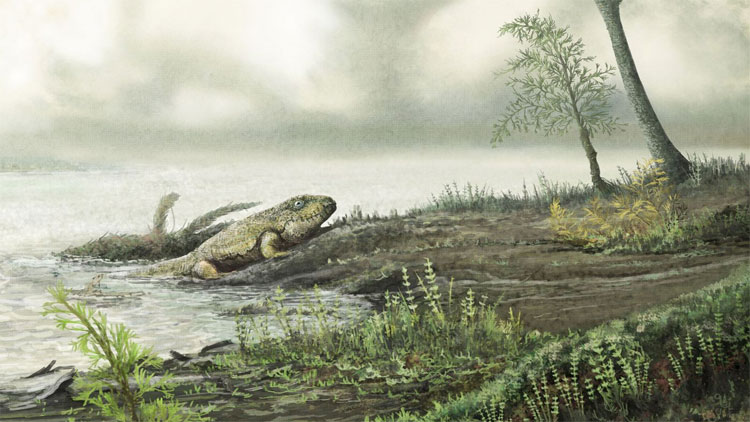The ancestor of antibiotic resistant bacteria dried up 450 million years ago
The virus is considered the "ancestor" of today's antibiotic-resistant bacteria following the footsteps of cattle crawling up to 450 million years ago.
In the study published in the May 11 issue of the journal Cell, two scientists, Ashlee Earl and Michael Gilmore, at the Broad Institute in the United States, said humanity's antibiotic-resistant bacteria problems are likely to start from the decision the depletion of animals about 450 million years ago, NPR reported.
"The type of Enterococci is likely to have lived in the first creatures that crawled out of the sea to land," Earl said. "They are in the gut of ancient organisms, as well as in our intestines today," the geneticist added.
Scientists conjecture that Enterococci bacteria are present in the gut of all kinds of animals that once lived on the ground for the past 450 million years, including dinosaurs. "We think this is very likely , " Earl said.

The virus that follows animals crawls up to 450 million years ago.(Photo: npr).
In the 1980s, Enterococci was one of the first bacteria to be resistant to almost all antibiotics in the market, making Enterococci considered the ancestor of viruses."It really is the dawn of the virus era , " Gilmore said.
When animals go up, Enterococci has developed properties that help their descendants today to grow in hospitals and prevent the most common antibiotics like penicillin, Earl and her colleagues say.
Gilmore and Earl studied the genes of 24 varieties of Enteroccoci found in the intestines of all animals, from bees, pigeons, fish to humans to find the secret of Enteroccoci's strength."We found about 126 genes specific to Enteroccoci , " Gilmore said. "Basically, this bacterium is like wearing a protective suit."
Many genes have been shown to be involved in hardening and strengthening cell walls."They make this bacterium stronger, can withstand dehydration and exposure to disinfectants , " Gilmore said.
Data show that the virus has been equipped with "protective gear" from 450 million years ago, capable of adapting to the transition from underwater life to land due to exposure to the more harsh environment after when being excreted by animals. "They are exposed to UV light, the temperature of sunlight and often starve, dehydrated," Gilmore said.
The "protective gear" that helped Enteroccoci conquer land life now allows this bacterium to survive in a hospital environment. "This ability has turned them into viruses , " Gilmore said. With this finding, scientists can begin to find ways to overcome Enterococci.
The US Centers for Disease Control and Prevention says that Enterococci bacteria cause nearly 70,000 Americans to experience health problems each year and more than 1,000 people die.
- Five types of antibiotic-resistant bacteria are particularly dangerous
- The scary truth about antibiotic-resistant bacteria
- The danger that people still misunderstand can kill 10 million people every year
- Video shows: Bacteria become resistant 1,000 times in just 2 weeks
- During 20 years of administering antibiotics, we still fail to fight the virus
- The danger is greater than cancer: Antibiotic-resistant bacteria
- £ 10 million for anyone to find a solution against antibiotic resistance
- The principle you must remember in an age of nightmares 'antibiotic resistance'
- Experts have warned about antibiotic resistance
- New antibiotic resistance
- Vietnam appears to be resistant to all antibiotics
- Bacteria resistant to all drugs discovered in the US
 Why do potatoes have eyes?
Why do potatoes have eyes? 'Tragedy' the world's largest carnivorous life: Death becomes ... public toilet
'Tragedy' the world's largest carnivorous life: Death becomes ... public toilet Tomatoes were once considered 'poisonous' for 200 years
Tomatoes were once considered 'poisonous' for 200 years Detecting microscopic parasites on human face
Detecting microscopic parasites on human face